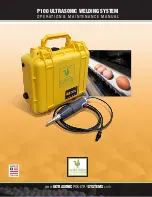
10
INST APD0601 A140513 Wireless Smoke Heat Alarm Install Guide
interference that may cause undesired operation of the device.
This equipment has been tested and found to comply with the limits
for a Class B digital device, pursuant to Part 15 of FCC Rules. These
limits are designed to provide reasonable protection against harmful
interference in a residential installation. This equipment generates, uses
and can radiate radio frequency energy and if not installed and used
in accordance with the instructions, may cause harmful interference
to radio communications. However, there is no guarantee that
interference will not occur in a particular installation. If this equipment
does cause harmful interference to radio or television reception, which
can be determined by turning the equipment off and on, the user is
encouraged to try to correct the interference by one or more of the
following measures:
•
Reorient or relocate the receiving antenna.
•
Increase the separation between the equipment and the receiver
•
Connect the equipment into an outlet on a circuit different from
that to which the receiver is connected.
•
Consult the dealer or an experienced radio/television technician
for help
“For your information, The National Fire Alarm Code, NFPA 72, reads as
follows:
“11.5.1 Required Detection.”
“Where required by applicable laws, codes, or standards for a specific
type of occupancy, approved single- and multiple-station smoke alarms
shall be installed as follows:
1. In a sleeping rooms and guest rooms
2. Outside of each separate dwelling unit sleeping area, within 6.4 m
(21 ft) of any door to a sleeping room, the distance measured along
a path of travel
3. On every level of a dwelling unit, including basements
4. On every level of a residential board and care occupancy (small
facility), including basements and excluding crawl spaces and unfi
nished attics
5. In the living area(s) of a guest suite
6. In the living area(s) of a residential board and care occupancy.
(Reprinted with permission from NFPA 72®, National Fire Alarm Code
Copyright © 2007 National Fire Protection Association, Quincy, MA
02269. This reprinted material is not the complete and offi cial position
of the National Fire Protection Association, on the referenced subject
which is represented only by the standard in its entirety.)
(National Fire Alarm Code® and NFPA 72
®
are registered trademarks of
the National Fire Protection Association, Inc., Quincy, MA 02269.)








































